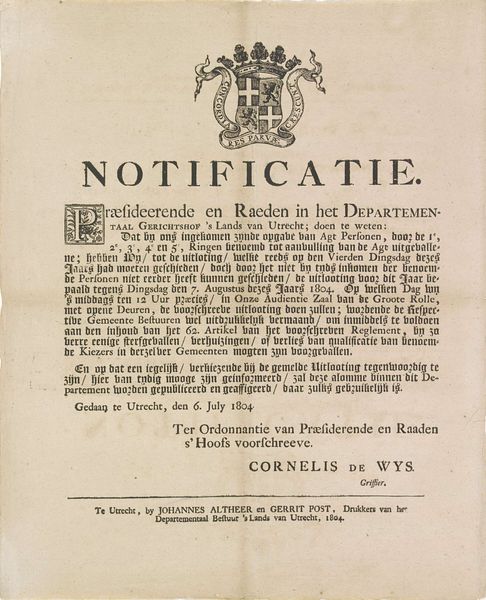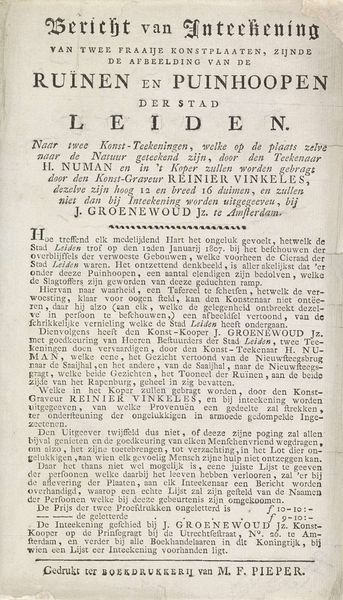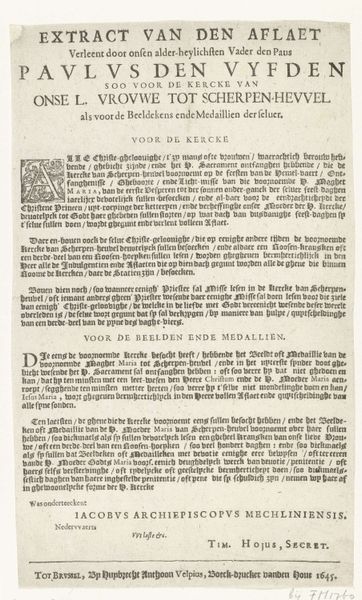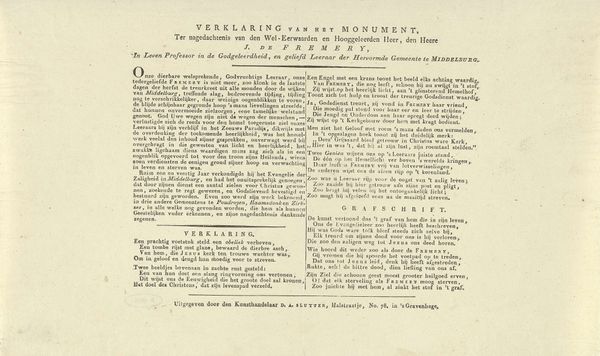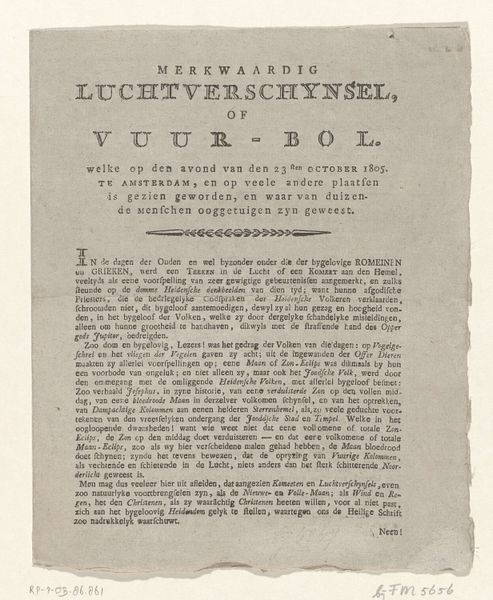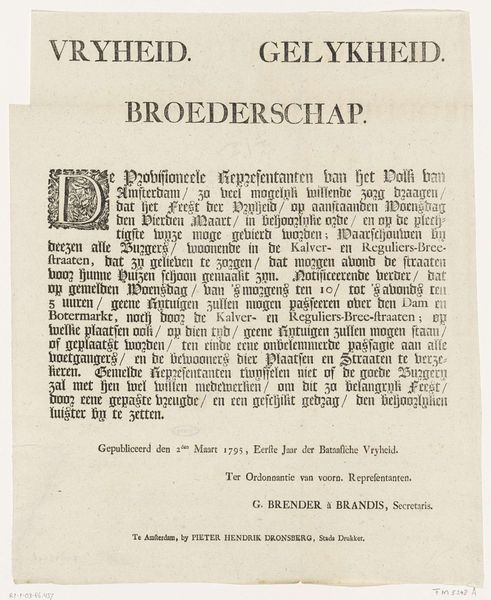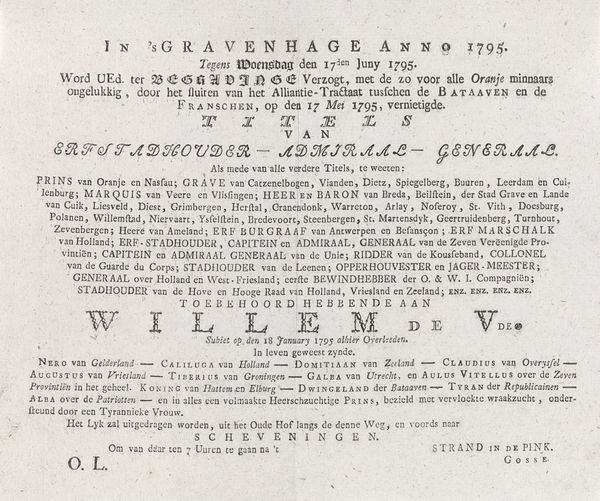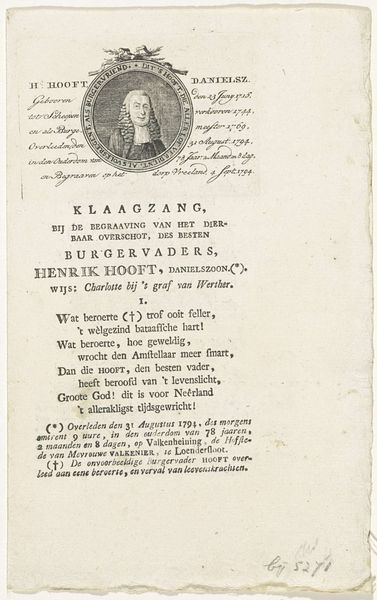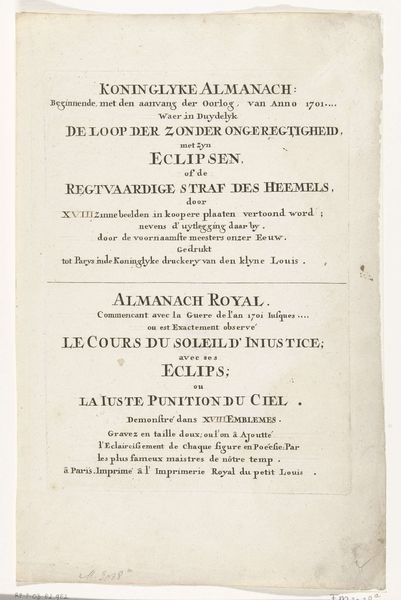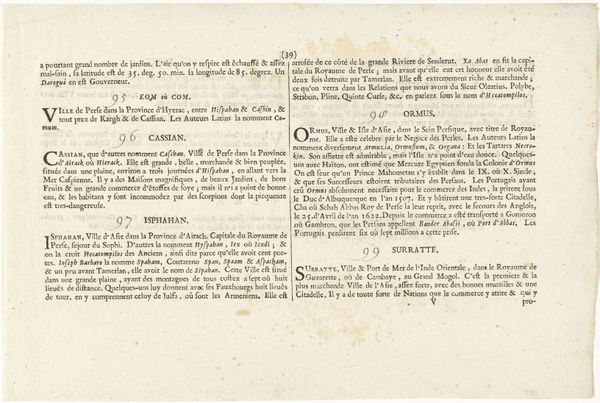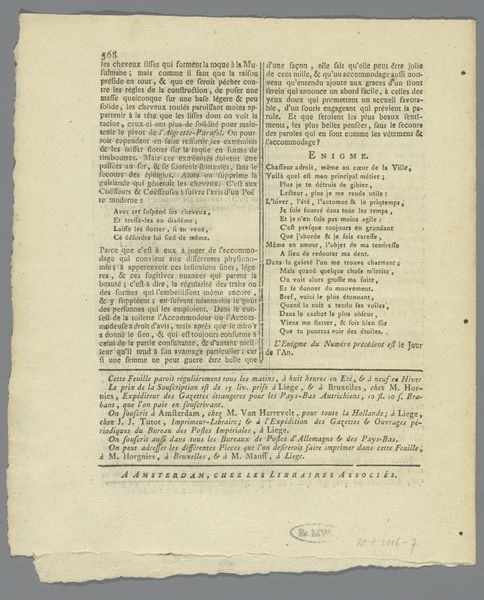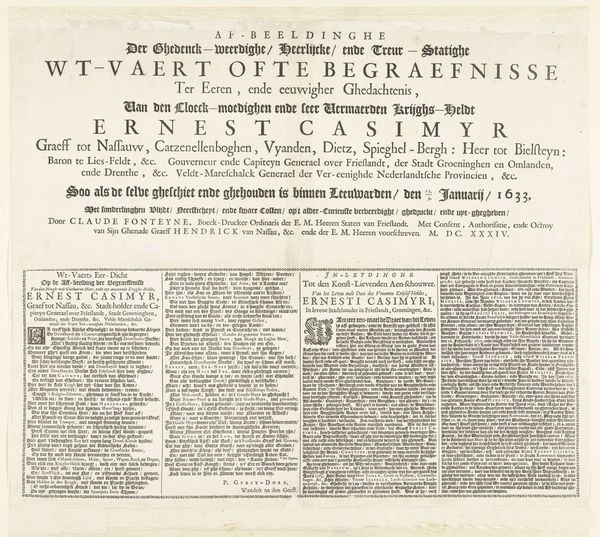
Verklaring van een medaille geslagen bij de begrafenis van Willem IV, 1752 1752
0:00
0:00
anonymous
Rijksmuseum
print, engraving
#
baroque
# print
#
text
#
engraving
Dimensions: height 245 mm, width 195 mm
Copyright: Rijks Museum: Open Domain
Curator: Look at this detailed print from 1752, currently held in the Rijksmuseum. It's titled "Verklaring van een medaille geslagen bij de begrafenis van Willem IV," or "Explanation of a medal struck at the funeral of William IV." Editor: It's certainly…busy. Very text-heavy. The density almost creates a visual texture, like a woven fabric. Is that intentional, do you think? Curator: Well, consider its function. It's an explanation accompanying a commemorative medal. It had to convey quite a bit: Willem IV's death and the grand public mourning. So we see references to Delft, where he was buried, the allegorical figures...all meant to underscore the deep loss felt. Editor: I do see a tiny cityscape represented near the bottom—so small! That miniaturization is striking against all the dominant text. Everything is fighting for my eye. Is it baroque, would you say? Curator: Very much so. Note the emphasis on emotional display—the public expression of grief is central. The print highlights the role of civic institutions, such as the "Schuttery" or citizen guard, in maintaining order during a time of mourning. This reflects the complex political landscape of the Dutch Republic at that time. The Dutch people had an intense attachment to their symbols of nationhood. Editor: Yes, I do find the text at the bottom interesting: "[De Schuttery] is altoos plichtuaerdig, zoo inblyde als in droevige omstandigheden," or "The militia is always dutiful, both in happy and sad circumstances." So it's designed to celebrate public virtue but it does all this celebrating through so much text. Curator: That text isn't just about facts, though. Look at how it frames Willem IV's death, creating and shaping a national narrative. How collective grief and civic duty intersect and reinforce each other, through the act of this print and commemorative token. Editor: Ultimately, while visually overwhelming, there's a real charm to seeing a society’s complex mourning process condensed into this small textual space. Curator: I agree. The Baroque’s blend of intense emotion, moralizing impulse and attention to civil order feels very appropriate to this token designed to cement a specific version of a historical moment in the public's minds.
Comments
No comments
Be the first to comment and join the conversation on the ultimate creative platform.
